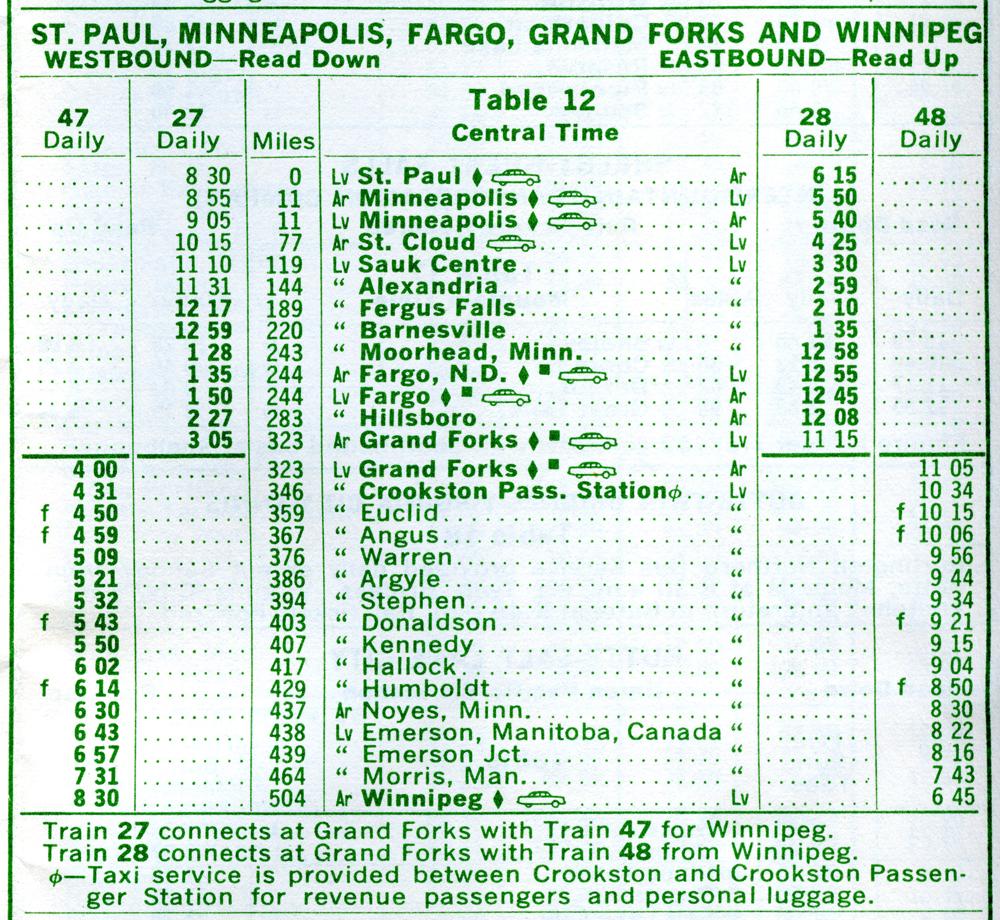
When you think of Burlington Northern, passenger service may not be the first thing that comes to mind. But from March 2, 1970 (Burlington Northern’s first day) to April 30, 1971 (the day before Amtrak started operations), the railroad offered passenger service. Among the name trains were the Empire Builder, Mainstreeter, North Coast Limited, and Western Star. Then there were the lesser known numbered trains, including No. 47, the “Winnipeg Connection” that ran between Grand Forks, N.D., and Winnipeg, Manitoba, Canada. Its counterpart was No. 48. If you’re looking to model a pike-size passenger train, this is one worth checking out.
What is a pike-size passenger train?
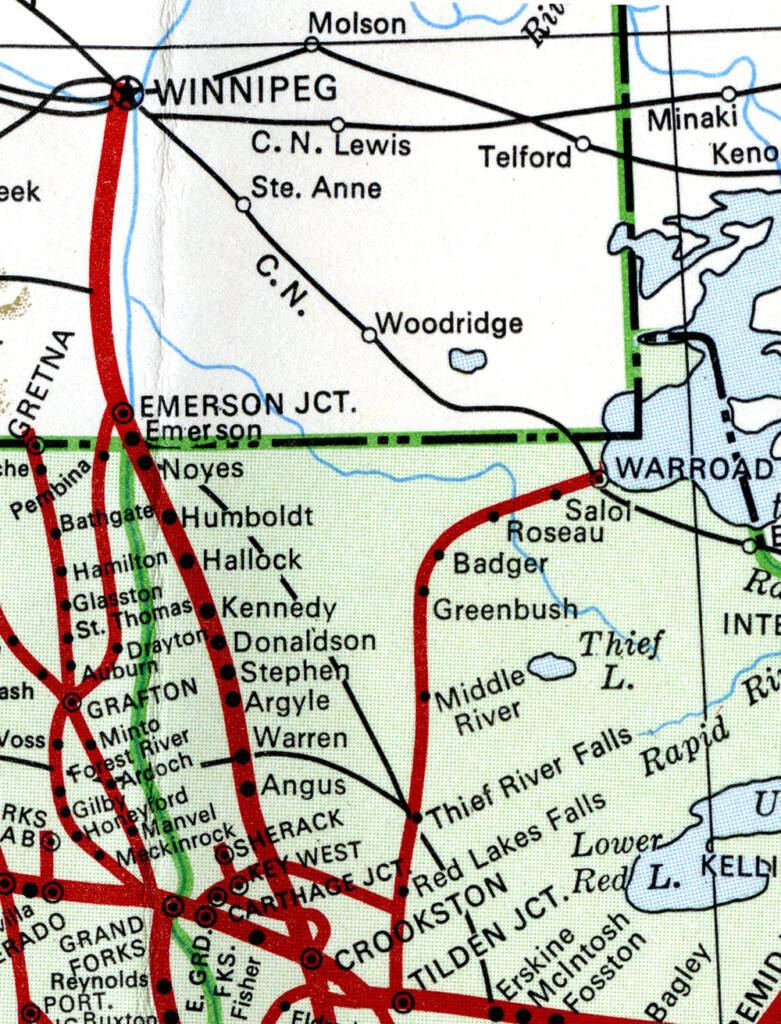
Long-time readers of Model Railroader will remember our occasional articles on pike-size passenger trains. By our definition, these trains had either one steam locomotive or one or two diesels and no more than five cars. See pages 42 through 47 of the June 2007 issue for examples.
Trains 47 and 48 fit the definition of a pike-size passenger train. It was powered by an Electro-Motive Division E7A (typically BN 9907 and 9909, both in GN’s simplified scheme but with BN reporting marks and road number). The consist was a storage mail-express car, a coach-dinette (snacks and beverages), and a reclining seat coach.
Tracking down photos
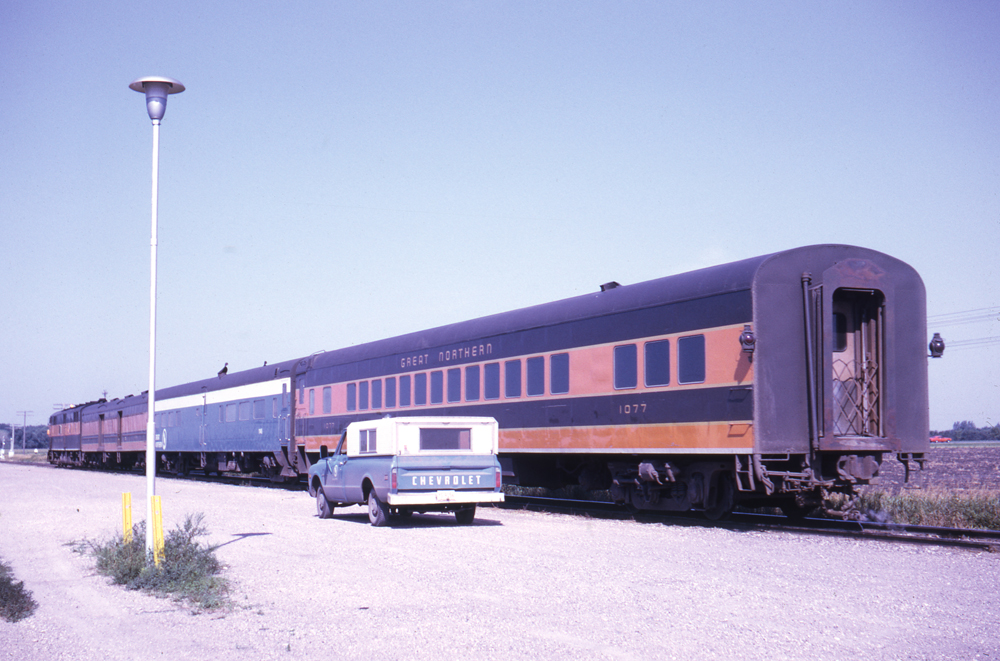
I knew about trains 47 and 48 when we ran the pike-size passenger train articles, but photos were difficult to come by. Though I’ve devoted many years to researching the railroad history of Crookston, Minn. (my hometown), it wasn’t until the past decade that I started coming across images of the short-lived passenger train. The first was a James Herold image from the Mark Perry collection showing BN E7 9909 on the point of the three-car No. 48 at Winnipeg. Additional photos of train 48 from Mark’s collection were published in the July 2013 issue of The BN Expediter, the official publication of the Friends of the Burlington Northern Railroad.
In 2022, this image taken in Grand Forks was posted to Flickr. Electro-Motive Division E7A 9909 is on the point again, but the equipment is different. Behind the engine is a Northern Pacific lightweight baggage car. In the middle is GN 1074, an ex-St. Louis-San Francisco 56-seat coach that was modified to a 40-seat coach-buffet in 1967. When structural repairs were made in 1969, shop forces removed the fluting below the windows, giving the car a distinct appearance. It looks like the third car may be an NP coach.
Recently, I hit the jackpot when three images of No. 48 showed up on an online auction website, including the one shown above. Carrying the markers is GN 1077, a Pullman-Standard 56-seat coach that started life as Chicago & North Western 3471 in 1947.
In the middle is GN 1145, an American Car & Foundry coach-diner built in 1950. The lightweight car, previously used on the International Star and Red River, had a 24-seat dining room and 28-seat coach section.
Behind the locomotive is baggage car 488. The car, rebuilt from Pullman heavyweight sleeper Cowper by the GN in 1949 or 1950, had six-axle trucks. I was unable to see the road number on the E7A. The images reignited the flame to model a pike-size passenger train.
What you’ll need
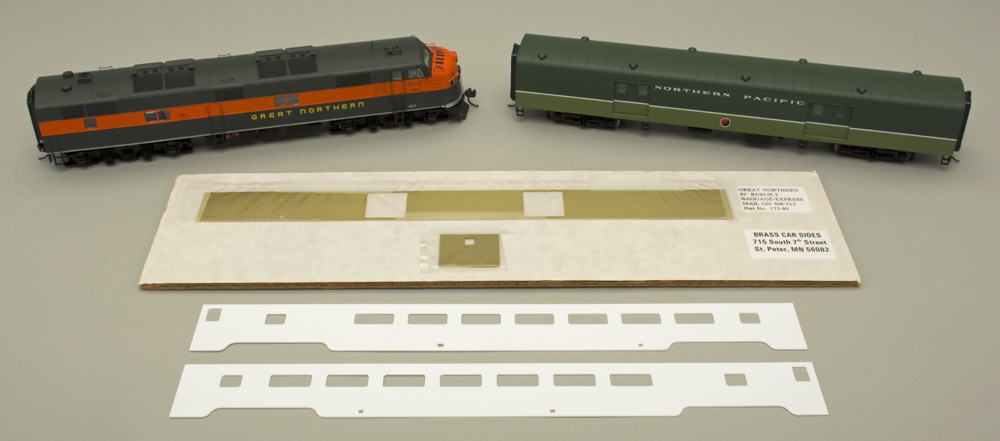
In the spirit of the pike-size passenger train articles, I’ve included a list of equipment you’ll need to model trains 47 and 48 in HO and N scales. Since the equipment used on the three-car train varied, I’ve given you some options for car types.
A few practical notes about the models I’ve suggested. Yes, some are sold out at the manufacturer. However, they may still be available at hobby shops, model railroad swap meets, and online auction websites.
Almost all of the cars will listed require core kits, trucks, couplers, interior and exterior details, paint, and decals, all sold separately. A few cars will also need modifications, such as removing the skirting and plating over windows. In cases where I couldn’t find an exact match for the locomotive or cars, I’ve provided starting points or reasonable stand-ins, some of which may require painting and decaling.
HO scale
Electro-Motive Division E7A (Great Northern simplified scheme)
- Walthers 920-47961 or Broadway Limited Imports (Paragon2 line) 2729. Both will need new road number and reporting marks.
Baggage car
Coach-dinette (snacks and beverages)
- Great Northern ACF coach-diner 1145, Brass Car Sides 173-78
- Great Northern PS buffet-coach 1074, Union Station Products 7537
Reclining seat coach
N scale
Electro-Motive Division E7A
- Undecorated model from Atlas/Roco, Broadway Limited Imports, Con-Cor, Kato USA, Life-Like, or Precision Craft Models
Baggage car
- Northern Pacific lightweight, RailSmith Models 9001911
- Heavyweight from Micro-Trains 70-foot heavyweight from 147 00 000 series
Coach-dinette (snacks and beverages)
- Great Northern ACF coach-diner 1145, Brass Car Sides 173-578
- Great Northern PS buffet-coach 1074, Union Station Products 7537
Reclining seat coach






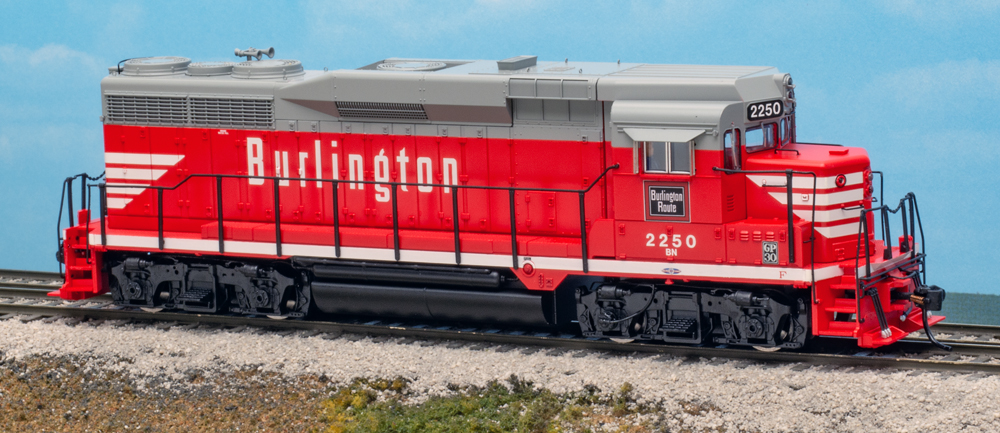
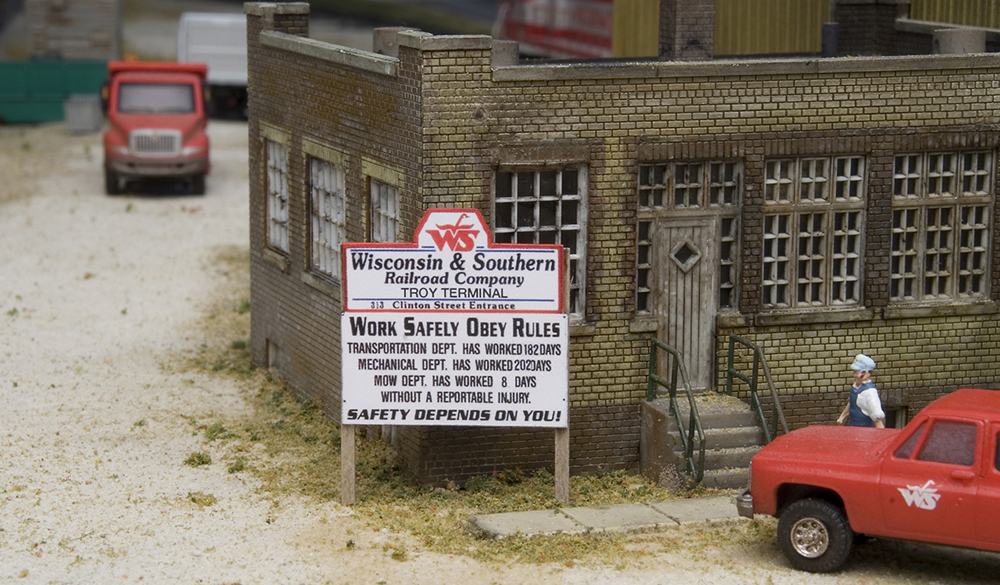
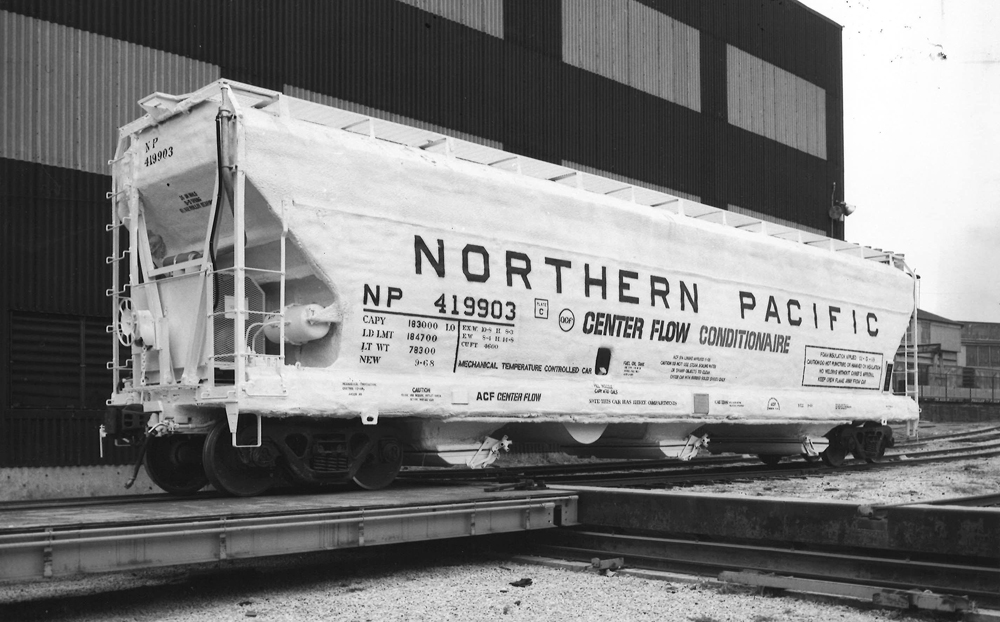
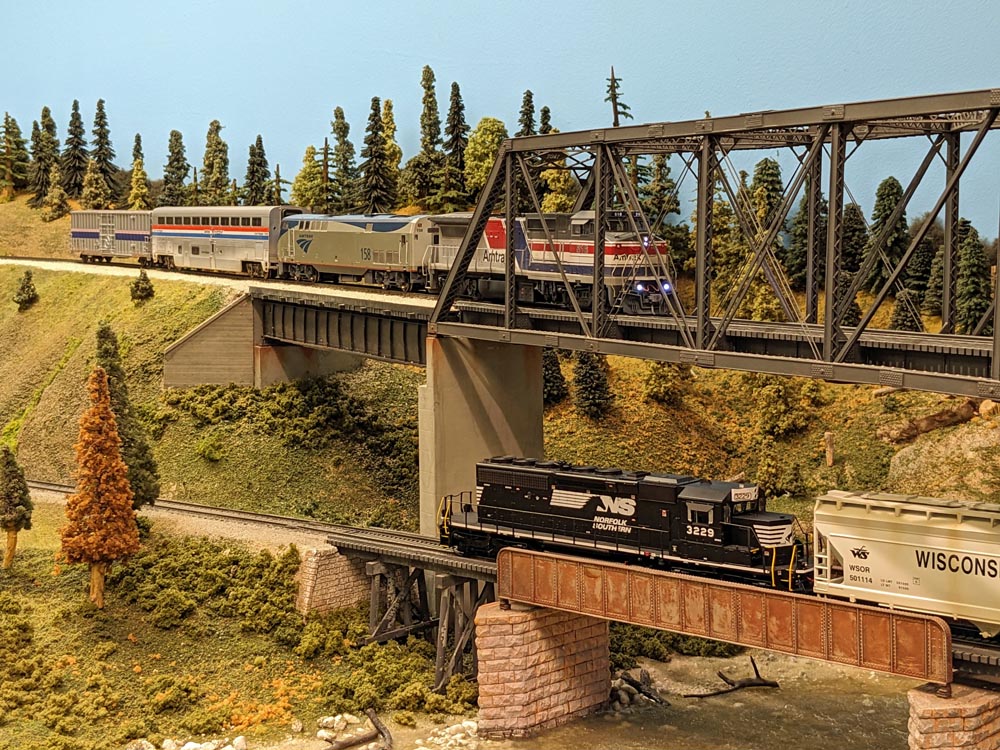




Probably a shortening of the word for very early toll roads: “turnpike”. Perhaps “turn” is a corruption of “toll”? There are many roads in Tennessee cities like Nashville and Memphis that started as private toll roads and still have “pike” in their name.
Where did the term “pike” come from? the only thing that word comes up with is about the fish, and nothing else. My own suspicion is that it was actually a mis-heard PINT SIZED, and that equates to a small sized…whatever